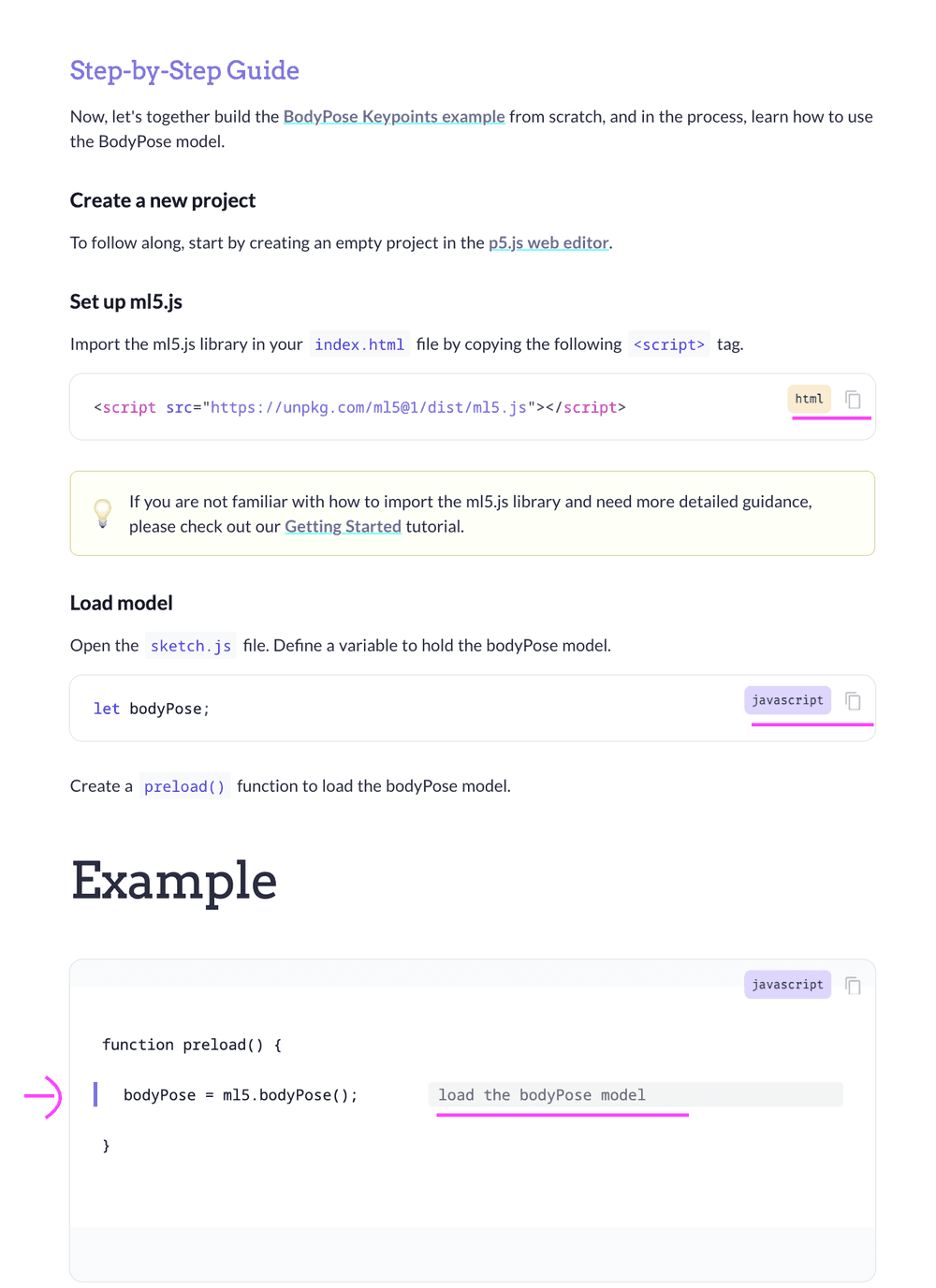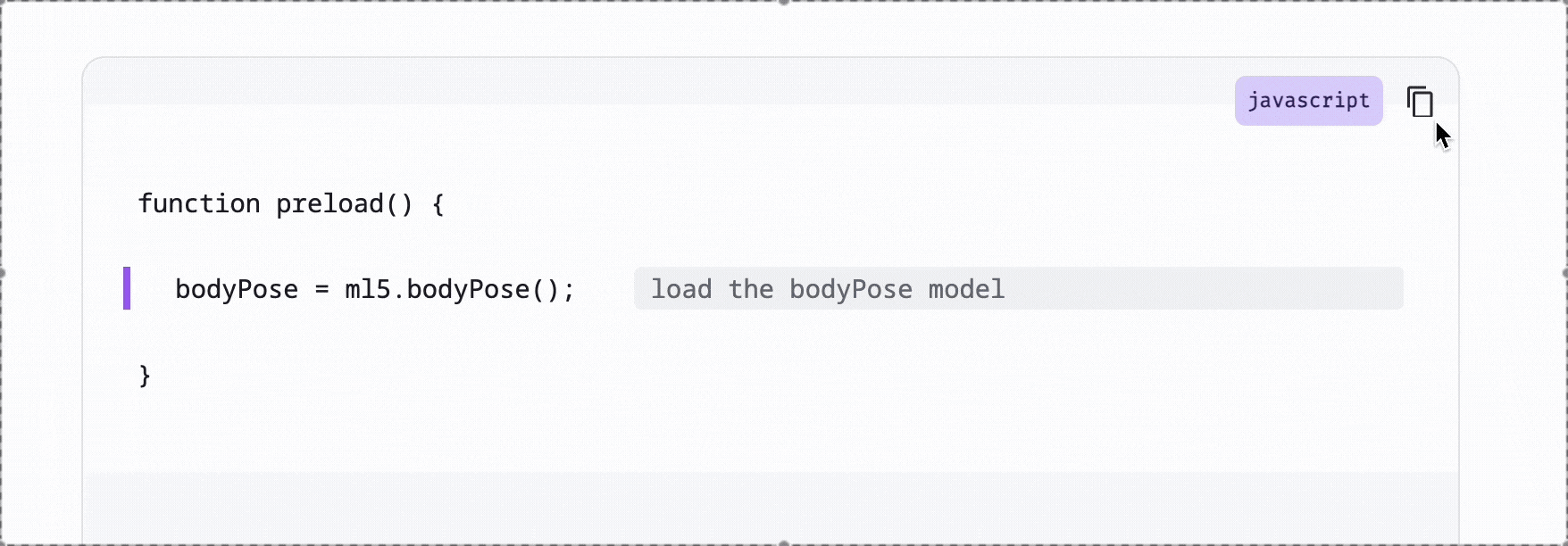Contributing to ml5.js: From Docsify Plugins to Soft Interactions
machine learning, open source, ml5.js, Docsify, documentation, creative coding, contribution | July 31, 2025
This summer, I contributed to the ml5.js open source project with a focus on improving the website’s contribution flow, documentation UX, and exploring creative applications of machine learning in the browser. My work spanned both technical and community-facing aspects of the project, giving me deeper insight into what it takes to support and sustain an open source ecosystem like ml5.
📮 Contribution Form Redesign
One of my primary contributions was designing and implementing an updated contribution form for the ml5.js website. The goal was to streamline how community members submit their creative work, projects, and tutorials. I focused on improving:
- Accessibility and clarity of the form
- Restructuring the input fields
- Submission flow UX
I collaborated closely with Moon and worked within the Gatsby-based architecture to ensure it matched ml5’s voice and contributor experience. I also had the chance to review project submissions, gaining a broader sense of how diverse users engage with ml5.js.
💬 Inline Code Explanation Plugin
Inspired by learners who thrive with embedded guidance, I built a custom Docsify plugin that adds inline explanations to code blocks. It uses a simple syntax where code and explanation are split with a |:
let classifier = ml5.imageClassifier('MobileNet') | initialize the classifier
classifier.predict(gotResult) | run prediction callbackThe plugin transforms this into semantic HTML:
<span class="highlight-line" data-code="..." data-comment="..."></span>Wrapped in a stylized container:
<pre class="code-comment-wrapper" data-lang="js">
<code class="language-code-comment">...</code>
</pre>Here’s the parser plugin logic (using Docsify’s beforeEach):
hook.beforeEach(function (content) {
return content.replace(
/```code-comment\s*(\w+)?\s*\n([\s\S]*?)```/g,
(match, lang = 'code', rawCode) => {
const lines = rawCode
.split('\n')
.map((line) => {
const [code, comment = ''] = line.split('|');
const safeCode = code
.trim()
.replace(/&/g, '&')
.replace(/</g, '<');
const safeComment = comment
.trim()
.replace(/&/g, '&')
.replace(/</g, '<');
return comment
? `<span class="highlight-line" data-code="${safeCode}" data-comment="${safeComment}"></span>` : `<span class="normal-line" data-code="${safeCode}"></span>`;
})
.join('\n');
return `<pre class="code-comment-wrapper" data-lang="${lang}">
<code class="language-code-comment">\n${lines}\n</code></pre>`;
}
);
});
📋 Copy-to-Clipboard Plugin
The second plugin I built adds a copy icon to all code blocks (including the above inline format). When clicked, it copies the raw code only (without comments) and shows a Copied! toast.

This uses the doneEach hook and dynamically appends buttons and toasts to rendered blocks.
🍯 Neural Nectar: A Parallel Exploration
Alongside my work on documentation, I also began prototyping Neural Nectar, a tiny series series of browser-based creative ML experiments using ml5.js + p5.js. Each sketch focuses on soft, poetic, or playful interactions—such as gesture-drawn flowers or reactive ambient sound environments.
My goal is to use these experiments to:
- Explore alternative interfaces for ML
- Build aesthetics of soft interaction and curiosity
- Deepen my understanding of ml5 model behavior
🎐 Reflections
This was my first time contributing to a large open source library from the inside. I learned:
- How documentation systems like Docsify and Gatsby work together
- How contributions, no matter how small, ripple outward in community projects
- That open source isn’t just about code — it’s about infrastructure, clarity, and participation
Contributing to ml5 gave me a deeper appreciation for the design of access — making ML tools not only functional but friendly, inclusive, and full of wonder.
“How can we build tools that not only work well, but also invite play, experimentation, and delight?”
🌸 Gratitude
Huge thanks to Moon, Dan, and the entire ml5 community for their generosity, mentorship, and creative energy. I'm honored to have played a small part in helping ml5 grow, and I look forward to continuing the journey.